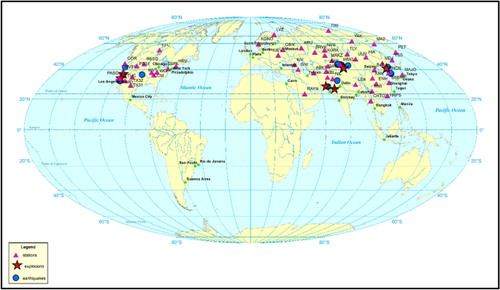Pure and Applied Geophysics ( IF 2 ) Pub Date : 2024-04-08 , DOI: 10.1007/s00024-024-03463-7 Shimaa. H. Elkhouly , Ghada Ali

|
In the field of seismic signal analysis, it is of utmost importance to accurately differentiate between earthquakes and underground nuclear explosions. As a contribution for the verification regime of the Comprehensive Nuclear Test Ban Treaty (CTBT), Various methods have been employed for this purpose, including Complexity, Spectral ratio, mb—Ms (body wave and surface wave magnitudes), and corner frequency of P and S waves. These discrimination techniques have been examined to manually identify natural seismic events from nuclear explosions across different regions worldwide, such as China, India, Pakistan, North Korea, and the United States. To gather the necessary data, a comprehensive dataset comprising nuclear explosions and earthquakes of the same magnitude range (4 ≤ mb ≤ 6.5) of 35 seismic events from 1945 to 2017 has been compiled from the International Research Institute for Seismology (IRIS) using broadband and long period seismic stations. The objective of this study is to employ a range of linear and nonlinear Machine Learning (ML) models with the aim of automatically distinguishing between underground nuclear explosions and large earthquakes to enhance the accuracy of manual feature extraction. For this purpose, time domain waveforms and different classifier techniques focused on feature extraction have been used. The ML models employed include logistic regression, K-nearest neighbours classifier, decision tree classifier, random forest classifier, voting classifier, and Naive Bayes. The outcomes of the ROC and AUC analyses were employed to validate the validity of our proposed discrimination algorithm. The results show that the Random Forest Classifier is the most effective model, obtaining 100% accuracy in the case of feature extraction, while the best model for the time domain waveform classifier that achieved 75.5% accuracy is the voting classifier.



























 京公网安备 11010802027423号
京公网安备 11010802027423号